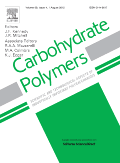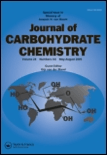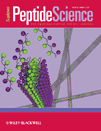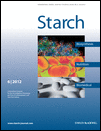
Polysaccharides
Scope & Guideline
Exploring the Frontier of Polysaccharide Research
Introduction
Aims and Scopes
- Biopolymer Characterization and Modification:
Research often involves the characterization of various polysaccharides, including their structural properties and modifications to enhance their functionalities for specific applications. - Sustainable Applications of Polysaccharides:
The journal emphasizes the sustainable use of polysaccharides in applications such as biodegradable packaging, food preservation, and environmental remediation. - Biomedical Applications:
A significant focus is on the use of polysaccharides in biomedical fields, including drug delivery systems, tissue engineering, and as bioactive compounds in therapeutics. - Food Science and Technology:
Research related to polysaccharides in food technology, such as their role in food texture, preservation, and as dietary fibers, is a core area of interest. - Innovative Processing Techniques:
The journal covers advancements in processing techniques for polysaccharides, including green chemistry approaches, to improve their functional properties and applications.
Trending and Emerging
- Nanotechnology in Polysaccharide Applications:
There is a growing trend of utilizing nanotechnology to enhance the properties of polysaccharides, particularly in drug delivery and food packaging, indicating a merge of materials science with biopolymer research. - Environmental Remediation:
Research on the use of polysaccharides for environmental applications, especially in water treatment and pollution remediation, is gaining traction, highlighting their potential as eco-friendly materials. - Functional Food Ingredients:
An increase in studies exploring the role of polysaccharides as functional ingredients in food, particularly regarding health benefits and nutritional enhancements, signifies a trend towards health-oriented food science. - Smart and Responsive Polymers:
Emerging studies focus on the development of smart polysaccharide-based materials that respond to environmental stimuli, indicating a trend towards multifunctional and adaptive materials. - Biodegradable and Sustainable Materials:
There is a noticeable increase in the exploration of polysaccharides for creating biodegradable materials, reflecting the global push towards sustainability and reducing plastic waste.
Declining or Waning
- Traditional Industrial Applications:
Research focused on conventional applications of polysaccharides in industries such as textiles and paper has decreased, possibly due to the emergence of more innovative and sustainable alternatives. - Basic Research on Polysaccharide Chemistry:
There seems to be a waning interest in purely theoretical studies on polysaccharide chemistry without a clear application context, as researchers increasingly seek practical applications. - Limited Focus on Specific Polysaccharides:
Certain specific polysaccharides, such as less commonly studied galactomannans or specific algal polysaccharides, are appearing less frequently, indicating a shift towards more widely applicable or commercially relevant polysaccharides.
Similar Journals

Carbohydrate Polymers
Pioneering breakthroughs in carbohydrate applications.Carbohydrate Polymers is a prestigious academic journal, published by ELSEVIER SCI LTD, that plays a vital role in the field of materials chemistry, organic chemistry, and polymer science. With its Q1 category rankings in these domains, this journal serves as a critical platform for disseminating high-quality research, innovative methodologies, and significant advancements in carbohydrate-based polymers. Since its inception in 1981 and continuing until 2025, it has fostered critical discussions and collaborations among researchers, professionals, and students worldwide. Although it does not offer open access, its rigorous peer-review process ensures that only the most impactful studies are published. By highlighting new developments in the synthesis, characterization, and application of carbohydrate polymers, Carbohydrate Polymers consistently contributes to the enhancement of knowledge and technology within its field, making it an essential resource for anyone working at the intersection of chemistry and materials science.

JOURNAL OF CARBOHYDRATE CHEMISTRY
Shedding Light on Molecular Sweetness.JOURNAL OF CARBOHYDRATE CHEMISTRY is an esteemed academic journal published by TAYLOR & FRANCIS INC, specializing in the intricate field of carbohydrate chemistry. With a focused scope that encompasses the chemical properties, synthesis, and applications of carbohydrates in various biological and industrial contexts, this journal serves as a vital resource for researchers, professionals, and students alike. Although currently not open access, it provides essential insights into both fundamental and applied aspects of carbohydrate research. Since its inception in 1982, the journal has made significant contributions to the scientific community, maintaining relevance through its continuous publication cycle projected to run until 2024. As reflected in its Scopus rankings, it occupies a niche position within the Q4 quartile in Biochemistry and Q3 in Organic Chemistry, making it a crucial platform for disseminating cutting-edge research findings in these fields. The journal's objective is to foster discussions that advance the understanding of carbohydrate functionality, thereby enhancing innovation and application in diverse scientific domains.

BIOPOLYMERS
Pioneering Insights in Biochemistry and BeyondBIOPOLYMERS, a distinguished journal founded in 1963 and published by WILEY, serves as an essential platform for the dissemination of research in the fields of biochemistry, biomaterials, biophysics, and organic chemistry. With an ISSN of 0006-3525 and E-ISSN 1097-0282, this journal has been pivotal in advancing our understanding of the intricate roles that biopolymers play in various biological systems and their applications in medicine and technology. The journal is recognized for its rigorous peer-review process and has established itself within the academic community, boasting impressive Scopus rankings across multiple disciplines, including a Q2 ranking in both Biophysics and Medicine for 2023. Although it does not offer Open Access options, BIOPOLYMERS provides invaluable access to critical insights and developments in the study of biopolymers, appealing to researchers, professionals, and students dedicated to innovating in this dynamic field.

STARCH-STARKE
Navigating the Intricate World of Starch ScienceSTARCH-STARKE is a prestigious journal published by WILEY-V C H VERLAG GMBH, focusing on the intricate fields of Food Science and Organic Chemistry. Established in 1949, this journal has carved a niche for itself as an essential resource for researchers and professionals seeking to explore the complexities of starch and its derivatives. With an impressive Scopus ranking—#139 in Food Science and #97 in Organic Chemistry—STARCH-STARKE holds a Q2 category position in both fields as of 2023, showcasing its significant impact and contribution to academic discourse. Although it does not offer open access options, the journal’s rigorous peer-review process ensures that the published content maintains the highest quality standards, making it an invaluable reference for students and seasoned researchers alike. With coverage spanning from 1949 to the present, STARCH-STARKE remains at the forefront of innovation in starch research, addressing both theoretical and practical applications.

Journal of Food Measurement and Characterization
Innovating Insights in Food CharacterizationJournal of Food Measurement and Characterization, published by SPRINGER, is a pivotal resource for researchers and professionals in the fields of Chemical Engineering, Food Science, and Industrial and Manufacturing Engineering. With an ISSN of 2193-4126 and an E-ISSN of 2193-4134, this esteemed journal has carved its niche since its inception in 2012, continuing to contribute valuable insights until 2024. Ranking in the Q2 category across multiple disciplines, including Safety, Risk, Reliability, and Quality, it reflects a strong commitment to advancing knowledge and innovation within these critical areas. Although it operates under a subscription model, the journal provides an array of access options for institutions and researchers keen to explore novel methodologies and analyses in food measurement and characterization. The journal’s rigorous peer-review process ensures the dissemination of high-quality research, making it an essential platform for advancing the science of food and related industries.

Journal of Bioresources and Bioproducts
Unlocking the potential of nature’s resources.Journal of Bioresources and Bioproducts, published by KEAI PUBLISHING LTD, is a premier open-access journal that has been at the forefront of research in biochemistry, biomaterials, forestry, materials chemistry, and organic chemistry since its inception in 2016. With an impressive impact factor and significant rankings in multiple categories—most notably, being positioned in the 99th percentile in several fields including Agricultural and Biological Sciences, Biochemistry, and Materials Science—this journal facilitates the rapid dissemination of innovative findings and techniques within these critical domains. The journal’s broad scope encompasses various aspects of bioresource utilization and bioproduct development, making it an essential resource for researchers, industry professionals, and students alike. The Journal of Bioresources and Bioproducts aims to promote scientific dialogue and shares pivotal insights that can spur advancements in sustainable practices and ecological conservation across different sectors.

JOURNAL OF POLYMERS AND THE ENVIRONMENT
Exploring the Future of Eco-friendly MaterialsJOURNAL OF POLYMERS AND THE ENVIRONMENT, published by Springer, is a leading academic journal in the fields of environmental engineering and materials chemistry, providing a vital platform for researchers, professionals, and students engaged in the study of polymers and their environmental impacts. With an impressive impact factor, the journal has established itself as a crucial resource in both the Q1 and Q2 quartiles for its respective categories, demonstrating its high-quality contributions to the scientific community. The journal, with ISSN 1566-2543 and E-ISSN 1572-8919, has been active since 2000 and continues to evolve as it converges towards 2024, ensuring it stays at the forefront of innovative research. Researchers will find the journal’s comprehensive analysis of polymers and sustainability foster a thorough understanding of contemporary issues while contributing to the sustainable development of materials. With an ever-expanding repository of open access content, the journal ensures wide dissemination of valuable knowledge, making it an essential aspect of the academic landscape in the United States and beyond.

Foods
Connecting Researchers to Transform Food Systems.Foods is a premier open access journal published by MDPI, based in Switzerland, that has been at the forefront of disseminating high-quality research in the fields of food science, health professions, and plant science since its establishment in 2012. With an impressive convergence of interdisciplinary studies spanning various aspects of food, nutrition, and microbiology, the journal aims to provide a comprehensive platform for researchers and professionals to share innovative ideas and findings. Maintained as a Q1 journal in multiple categories for 2023, including Food Science and Health Professions, Foods has garnered significant recognition within the academic community, reflected in its strong Scopus rankings and percentiles across various disciplines. The journal not only promotes open access to enhance the visibility and accessibility of research but also encourages the exploration of sustainable food systems and health-related issues, thus contributing to essential discussions in today's society. For those looking to advance their understanding and expertise in food-related sciences, Foods serves as an enduring resource for groundbreaking studies and critical insights.

Food and Bioprocess Technology
Pioneering Insights in Food Science and EngineeringFood and Bioprocess Technology, an esteemed journal published by Springer, serves as a premier platform for disseminating cutting-edge research in the realms of food science, industrial manufacturing engineering, and process chemistry and technology. Established in 2008, the journal has quickly ascended to the prestigious Q1 quartile in multiple categories, highlighting its impact and relevance within the scientific community. With an impressive Scopus ranking that places it in the top tiers of its fields—such as rank #17 in Safety, Risk, Reliability, and Quality, and rank #38 in Food Science—this journal is pivotal for researchers and professionals aiming to publish innovative findings that advance food processing and bioprocess technology. Beyond its rigorous peer-review process, the journal facilitates access to high-quality, impactful research, reinforcing its significant role in shaping the future of biotechnological applications in food systems. Aimed at both scholars and practitioners, Food and Bioprocess Technology is an essential resource for those engaged in exploring sustainable practices and enhancing food quality and safety. Furthermore, by addressing essential topics in the field, it fosters collaboration and knowledge exchange among researchers dedicated to advancing the bioprocessing landscape.

CURRENT OPINION IN COLLOID & INTERFACE SCIENCE
Advancing the Frontiers of Colloid and Interface ScienceCURRENT OPINION IN COLLOID & INTERFACE SCIENCE, published by Elsevier Science London, serves as a premier platform for researchers and professionals in the field of colloid, interface science, and related disciplines. With an impressive Q1 ranking in multiple categories including Colloid and Surface Chemistry, Physical and Theoretical Chemistry, Polymers and Plastics, as well as Surfaces and Interfaces, this journal showcases cutting-edge developments and expert opinions that drive innovation in these areas. As a leader in its field, it maintains robust academic standards, reflected in its high percentile rankings across various Scopus categories, such as 3rd in Surfaces and Interfaces and 10th in Physical and Theoretical Chemistry. While the journal is not Open Access, it provides valuable insights to a wide audience, making it an essential resource for advancing knowledge and fostering collaborations among researchers, academics, and industry professionals alike. With a continual publication timeline extending from 1996 to 2024, it captures the evolving landscape of colloid and interface science, ensuring that readers are equipped with the latest findings and perspectives.